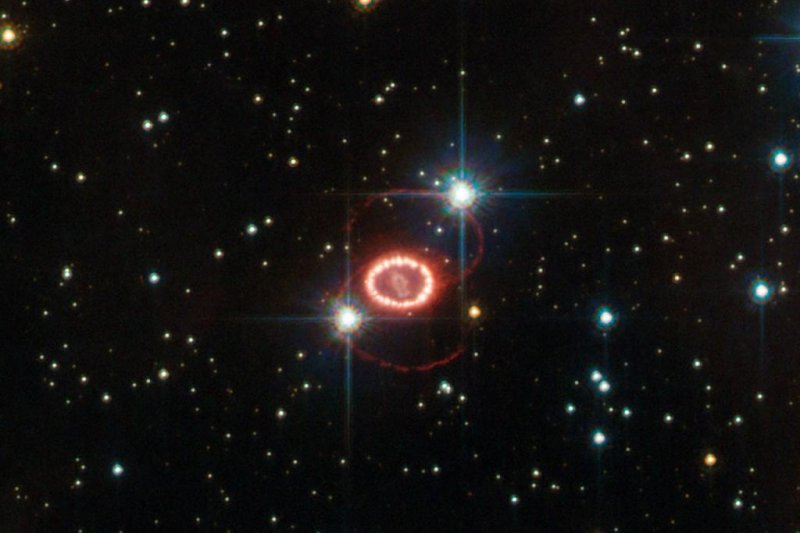The explosion of 1987A was one of the brightest supernovae ever recorded. Photo by NASA/ESA/Hubble
BERKELEY, Calif., May 7 (UPI) -- NASA's Nuclear Spectroscopic Telescope Array (NuSTAR) has confirmed that an exploded star was demolished in a lopsided fashion.
The new data -- detailed in the latest issue of Science -- is evidence that the star, named 1987A, died a violent death known as a Type II or core-collapse supernova. Type II supernovae are asymmetrical by nature.
The star, which lies 166,000 light-years away in a neighboring dwarf galaxy, actually exploded in 1987. It was one of the closest supernovas ever recorded, and one of the first opportunities to study a stellar explosion up close. As the remnants of the explosion have evolved over time, scientists have been able to glean new insights into the nature of the violent stellar phenomenon.
Subsequent research has hinted at the lopsided nature of the star's explosion, but NuSTAR's observations confirm the core-collapse characterization. The telescopic array was able to plot the scattering of titanium-44 more precisely than ever before. Titanium-44 is a radioactive material isolated to the core of the intense explosion.
"Radioactive titanium-44 glows in the X-rays no matter what and is only produced in the explosion," study co-author Brian Grefenstette, an astronomer at the California Institute of Technology, said in a press release. "This means that we don't have to worry about how the environment influenced the observations. We are able to directly observe the material ejected in the explosion."
The observations showed that the element had been sprayed unevenly, suggesting that the star's unstable core initiated a lopsided explosion.
"Stars are spherical objects, but apparently the process by which they die causes their cores to be turbulent, boiling and sloshing around in the seconds before their demise," explained lead author Steve Boggs, a researcher at the University of California, Berkeley. "We are learning that this sloshing leads to asymmetrical explosions."
There is more research to come. As the evolution of the smoldering supernova continues, the explosion will be revealed in new ways.
"In some ways, it is as if 1987A is still exploding in front of our eyes," said Boggs.















